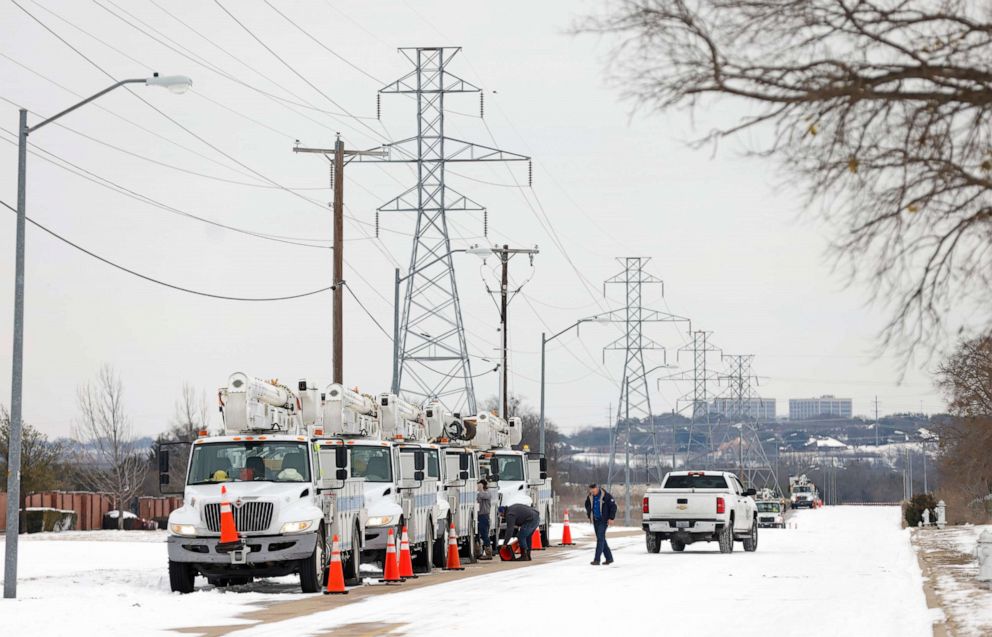Catastrophic power outages in Texas aren't just a result of the cold
The state's electrical infrastructure plays a big role.
Local infrastructure doesn't get much attention -- until it fails. Like right now in Texas. The state's electric grid, like most of the nation's, consists of many parts at least 50 years old.
"Our electric grid is not a brand-new, state-of-the-art-designed system, anywhere in the United States," Maggie Koerth, a senior science reporter for FiveThirtyEight, told ABC News' daily podcast, "Start Here." "You're often talking about something that kind of evolved over time, that nobody planned out. ... There's all sorts of little weird things about how our grid functions that are unideal, but work most of the time -- and then when they stop working it becomes a real big problem."
Across Texas, 2.4 million still were without power as of Wednesday evening, amid a week of historic winter weather.
Koerth, who wrote a book about U.S. energy systems, said the freezing temperatures and precipitation Texas is experiencing can take down everything from the lines outside people's homes, freeze natural gas at production sites and prevent energy workers from driving to work.

The Electric Reliability Council of Texas, the agency that oversees the state's grid, entered its highest alert level overnight into Monday and started rolling blackouts to conserve power. ERCOT also asked residents to close their blinds, unplug unused appliances, postpone doing laundry, wear warmer clothes and set thermostats no higher than 68 degrees.
Amid the pandemic, shipments to the state have even been halted because "it is not safe for people to be out across much of Texas right now," the state's Deptartment of Health said. Two federal agencies with oversight of energy grid reliability will open a joint inquiry into grid operations during the storm.
Another factor in the struggle to power Texas is the state's independent grid.
"The U.S. electric grid is divided into three parts, everything east of the Rocky Mountains, everything west of the Rocky Mountains and Texas," Koerth explained. "Texas is like a whole other country."

"It is like that because of politics. There's no technical reason why it has to be that way. There's no reason it's a remotely ideal situation," she continued. "That is what has evolved in that region for social, cultural, political reasons over the last 100 years. What it ends up meaning is that Texas can't share electricity or get electricity from the rest of the country very easily. It's possible, but it's not a very simple thing to have happen."
That independence has had some benefits, and is a major reason why the state has led the nation in developing wind farms.
But Texas wind farms are different from those in states to the north. In Minnesota, turbines are running with ease because of investments in a cold-weather package for their turbines, which includes heaters and de-icing mechanisms, Koerth explained.

That said, a lack of wind power isn't the biggest problem in Texas, said Koerth, who added that "a far greater proportion of their lost generation capacity was coming from natural gas."
The Texas outages are a wake-up call for serious discussions about infrastructure upgrades," Koerth said.
"Our electrical infrastructure, all over the U.S., is very, very old. This is something that you see when disasters happen," she said. "You saw that with the Camp Fire, in California, with that 100-year-old transmission line that was involved in sparking that fire.
"There's a bunch of old houses in America that are still operating a knob-and-tube wiring because there's not a big incentive to spend your renovation money on something like that if it's still working, until it catastrophically fails. It's the same thing with the grid as a whole."




